Introduction
Sport is closely linked to the struggle against apartheid in South Africa, with the primary focus on the cricket and rugby tours both to and from South Africa from 1970 to the end of apartheid in the early 1990s. However, it was the International Table Tennis Federation that was the pathfinder for opposition to apartheid through sport, from as early as 1948. I believe these events deserve to be known more widely, so in this article I shall review: the historical development of the ITTF’s policies to the two South African Table Tennis associations, one segregated and the other unsegregated; the impact of these actions; make comparisons with other sports and close with some personal thoughts.
Apartheid, the legal structure based on white supremacy in South Africa, was formally established in 1948 after the election of D. F. Malan’s National Party. However, discriminatory legislation existed beforehand including a ‘whites only’ qualification for parliamentary candidates and deep social segregation in sport and elsewhere.

Ivor Montagu, ITTF President
The key figure in our sport’s opposition to discrimination in South Africa and elsewhere was Ivor Montagu – a name well known to anyone with an interest in Table Tennis history. Born in 1904 to a wealthy banking family, he was a notable figure in the early days of the film industry and a key left-wing journalist and author. He was also a propagandist and for a period a spy for the Soviet Union. His achievements in Table Tennis are remarkable: a key figure in the rejuvenation of the sport in England, leading to his setting up the English Table Tennis Association in 1921 and the codification of the rules. He was also a prime mover in the establishment of the ITTF in 1926, where he was the first chairman and then president from 1926 to 1967.
The ITTF and Table Tennis in South Africa
The ITTF Constitution was originally written by Ivor Montagu in 1926. Then in 1936. (1) he submitted a revised version which was duly approved, including for the first time a statement that Table Tennis associations applying for ITTF membership must be:
‘…conducting the sport territory in such a way as to enable participation in it of citizens irrespective of colour, race or creed…’
I am not aware of any other sport at that time including such an anti-discrimination clause, although today, the majority do.
In 1971 Ivor Montagu wrote a two-part article, published in the English Table Tennis Association magazine, Table Tennis News, entitled ‘Table Tennis and South Africa,’ in an attempt to correct some misunderstandings reported in the press. As part of the background to the situation in the late 1940s, he recounts the problems that arose for the ITTF concerning Germany in the 1930s when Jewish players were excluded first from selection and then from all play by the German Table Tennis Association. The matter came up at an ITTF AGM, but Montagu was told beforehand by one delegate that a number of central European associations had directed their representatives to support the German view in all matters,
‘…even if it should be a proposal to make the ball square.’ As a result, a watered-down resolution was passed which the Germans, ‘… foresaw that it would be easy to ignore.’ (2)
Montagu continued that in 1947 the mood was very different,
‘The vote was overwhelming for making all-inclusiveness without discrimination an explicit condition of association membership.’
In South Africa there were two associations: the multi-racial South African Table Tennis Board (SATTB) and the whites only South African Table Tennis Union (SATTU). Montagu opined that the latter was the larger and probably had a higher standard of play, but the whites only rule was clearly in breach of the ITTF Constitution.

Montagu received at Cairo airport
Montagu describes a visit in 1948 by a representative of SATTU seeking ITTF membership, which would open the door to official tours and participation in ITTF events. Montagu remembers the crucial question posed by a member of the ITTF Committee,
‘What proportion of the population do your players represent?’
The SATTU representative listed the population of South Africa with 1.5 million Europeans and 11.5 million non-Europeans, adding,
‘That is why we have to keep separate or we should be swamped.’
The ITTF questioner was flabbergasted and exclaimed,
‘…you have the impertinence to come here expecting us to recognise you as “South Africa” when you represent such a tiny minority!’
The SATTU application was unanimously rejected.
In 1950, the ITTF received applications from the non-racial SATTB and again from the whites only SATTU. In line with its Constitution, the ITTF AGM, ‘Agreed the SATTB eligible and the SATTU not eligible. Agreed to accept into “good standing” the SATTB.’(3) However, they did also recommend that the two South African bodies discuss working together with a view to
‘…eventual joint representation in international matters…’
In addition, SATTU members were allowed to play with ITTF players by consent of SATTB or could appeal to the ITTF Advisory Committee if SATTB approval was
‘…unreasonably withheld.’
The SATTB good standing was renewed in 1951.(4) In 1952 the Board applied for full membership which was not granted but the AGM again confirmed their good standing status. The membership application of SATTU was again rejected, but showing concern for the state of affairs, the ITTF set up a Committee to,
…continue negotiations with a view to aiding solution to of the position in South African Table Tennis.(5)
However, perhaps inevitably given the apartheid system, the two associations did not reach an accommodation until the end of apartheid in the 1990s.
At the 1953 AGM, the ITTF Committee set up the previous year, reported that while conversations had taken place between the Committee, the Board and the Union, that nothing had occurred to change the present positions of the two organisations, which were confirmed by the AGM. It was agreed that the Committee should continue its work.(6) However, these attempts at conciliation did not bear fruit.

A breakthrough for the SATTB occurred in 1957 when for the first and last time before the 1990s, they were able to send a men’s team to the World Table Tennis Championships in Stockholm, Sweden.7 Five players and a manager took part: Mr Bassa, the manager and the team (men only) was Cassim Peer (captain), Ashwin Valjee, PR Maistry, Dennis Groenewald and Pappa Mullah. According to the New Age newspaper,
‘…it was not easy for them to participate in an international competition,’ (8)
and they failed to win any matches against much stronger opposition.(9) According to the New Age newspaper, the team did not receive the blessings of the South African government and it would have been almost a mission impossible to get them passports as a team.
After the 1957 Worlds, Montagu sent a warm letter to the Board,
‘It was a happy occasion that enabled … the players of other lands for the first time to meet a team from the Board …’ (10)
He concludes with the moving message,
‘We look forward, as no doubt do yourselves, to the time when circumstances permit all the Table Tennis enthusiasts of South Africa, regardless of colour, race or creed, to come together round our sporting table.’
Impact of the ITTF decisions concerning Table Tennis in South Africa
Although the Board was the only non-racial association to achieve international recognition in the 1950s, a number of non-white sports associations had also approached international bodies. The South African Government took action and the Minister of the Interior, Dr. T. E. Donges, announced on June 27, 1956, to the effect that Non-European sporting activities,
‘… must accord with the policy of ‘separate development’. Whites and non-whites should organise their sporting activities separately…’ Further, he continued, ‘It would not support non-white sporting activities designed to force the country to abandon its traditional racial divisions by any process of squeezing white South Africans out of international competitions. Dr. Donges concluded by announcing that no travel facilities would be granted to people guilty of such subversive intentions.’ (11)
Thus, after 1957, never again in the apartheid era could the Board compete in ITTF events.
Dennis Brutus, long-term campaigner for non-discriminatory sport in South Africa and victim of Government oppression wrote,
‘…some sharp clashes have taken place in various branches of sport. The most notable, since it resulted in a victory for the non-White body—on the grounds that its constitution is open to all South Africans—was that in Table Tennis.’
He continued mistakenly that in 1956 the SATTB was recognised and the SATTU banned by the ITTF, whereas, as shown above, the SATTU was never recognised and the SATTB was accepted in 1950.(12) Nevertheless, Brutus had shown that Table Tennis was a valued example of non-racial sport.
In her 1971 report to the UN Unit on Apartheid, Mary Corrigall wrote:
‘In 1956, the first victory against apartheid sport was won in the field of table tennis. The International Table Tennis Federation removed the all-white South African Table Tennis Union from membership and recognised the non-racial South African Table Tennis Board as the sole controlling body in South Africa. … this decision encouraged other sports organisations to take similar initiatives.’ (13)
As with Brutus, the crucial date was 1950, not 1956 and the Union was not removed – it was never accepted. However, it is noteworthy that Corrigan believed the Board’s success encouraged other sports.

Albert Luthuli, ANC President
The Board’s success was also appreciated by Albert Luthuli, President of the foremost anti-apartheid organisation, the African National Congress (ANC). In 1956 he addressed the Natal Branch of the ANC, saying,
‘When a people come to the realisation of their plight and begin to fight back unitedly there is surely room for jubilation and optimism. The fight equally is being fought on every front. The fight has been won by the S. A. Table Tennis Association [Board], which has gained international recognition.’(14)
As described above, there was a dialogue throughout this period between SATTB and SATTU. The latter had no choice if they wanted to invite foreign teams, they had to do so through the Board. The ITTF Museum has copies of letters from around 1960, which illustrate the frustration of both parties and it must have irked the Union that alone among South African sports, they were in a subservient position to an unsegregated organisation.
Apartheid and other sports
Having discussed the history of Table Tennis and apartheid in some detail, for comparison I shall provide a brief overview of the situation in some other sports.
The International Federation of Association Football (FIFA) adopted an anti-discriminatory clause for the first time in 1962,
‘to prevent racial, religious or political discrimination or distinction among players whether their Status be amateur, non-amateur or professional.’ (15)
Corrigall describes that FIFA’s policies regarding South Africa oscillated in the early 1960s. (16)
As early as the mid-1950s, the non-racial South African Soccer Association had pointed out to FIFA that it had more than twice the membership of the whites only body, the Football Association of South Africa (FASA). However, because FASA had a large number of friends in FIFA, it was only in 1961 that FASA was suspended. Sir Stanley Rous of England, President of FIFA, lead a mission to South Africa and then recommended the reinstatement of FASA which took place in 1963. However, opposition from African and Asian associations resulted in the reimposition of the suspension at the FIFA Tokyo congress in 1964. Rous continued to try to reinstate FASA which lead to his defeat in the 1974 FIFA Presidential election. (17)
Corrigall points out that in many sports,
‘…senior officials of international bodies worked desperately to maintain the status quo and retain all-white bodies as full members.’
For the Olympics, the South African Non-Racial Olympic Committee (SAN-ROC) was set up in 1963 and achieved success the same year at the International Olympic Committee (IOC) meeting in Baden-Baden. Corrigall writes:
‘… senior officials of the IOC were strongly committed to keeping white South Africa in the Olympic Games despite open violation of the Olympic Charter. South Africa enjoyed extensive support among representatives of most Western countries. It was only by the coordination of the efforts of the Afro-Asian representatives, supported by the Socialist countries and one or two officials from Western Europe, that apartheid sport was excluded from the [1964] Olympic Games.’
South Africa was again excluded in 1968 and in 1970, the white South African Olympic Games Association was expelled from the Olympic movement.
The 1970 South African cricket tour of England was cancelled by the MCC, but only after strong pressure from the UK Government and in the same year the International Cricket Conference imposed a moratorium on all tours to and from the apartheid state, but from time to time, so-called ‘rebel tours’ did take place in South Africa. (18)
South Africa remained a member of the International Rugby Board throughout the apartheid era. The last South African tour was to New Zealand as late as 1981 and several official international tours to South Africa continued in the 1980s.
In Tennis, the South African Davis Cup team was banned in 1970, reinstated in 1973 and then banned again in 1979, having won the event in 1974. (19)
Conclusion
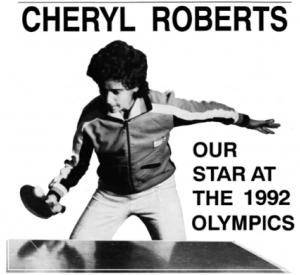
During the transition period away from Apartheid, 1990-1993, South Africa sent a team to the 1992 Summer Olympics which included two Table Tennis players, Cheryl Roberts and Louis Botha, the first opportunity for international representation for the sport for 35 years. The two players were granted wild cards by the ITTF and the Unified SATTB took a policy decision that all teams would be selected on a 50/50 basis. Cheryl Roberts was thus from the former SATTB while Louis Botha was from SATTU. The selection of all future teams in the immediate future reflected teams of national unity. In an interview for Speak magazine, Roberts described how she started with Tennis, but turned to Table Tennis in a neighbour’s garage when she was turned away from a ‘whites only’ Tennis club. (20)
The SATTB and the SATTU signed a declaration of intent on the 21 July 1991 to unite the two bodies into one controlling body for Table Tennis in South Africa. The Unification of the SATTB and the SATTU was facilitated by Mr Hans Gisecke (ITTF Honorary Treasurer), George Segun (ATTF President) and Mr Fikrou Kidane (Special advisor to the IOC on African Affairs). As at April 2020, the South African women’s team is ranked 45th by the ITTF and men’s team 57th.
While the actions of the ITTF and Ivor Montagu did not spark an immediate transformation in South Africa, they did put down a marker that was recognised by various groups in the country and around the world. The IOC recognised the ITTF’s programme of ‘Ping Pong Diplomacy’ and invited the SATTB to accompany ITTF President Mr Ochiro Ogimura to address the IOC’s Centennial Olympic Congress in Paris in 1994. The theme was: ‘Olympic Movement and International Understanding’.(21) Montagu died in 1984 but it is clear that he would have been delighted by the changes that took place in South Africa less than ten years later.
To end on a personal note, I take some pride that the most significant sport in my life, Table Tennis, led the way in determining that apartheid was unacceptable. Several years ago, I visited the museum on Robben Island, the prison off Cape Town used to imprison and isolate Nelson Mandela and other leaders of the African National Congress. In the cells, former prisoners have written their memories of their harsh detention illustrated with personal objects. The most striking for me was an inmate’s account of an overseas charity providing a Table Tennis table, equipment and a book on how to play. Many prisoners worked hard on their game in their free time and our sport proved an important source of respite. In pride of place in the inmate’s cell was his handcrafted certificate as runner-up in the prison tournament.
Article © of Stuart Sweeney
Acknowledgements
I am grateful to Chuck Hoey, ITTF Honorary Curator & Historian and Russell Campbell, Adjunct Professor, Victoria University of Wellington, for providing research materials and welcome encouragement. Maggie Foyer, Open University Associate Lecturer, provided valuable support by proofreading and formatting the article. Also, my thanks to Joe Carrim, President of the SATTB, for his additional contributions and to Dr Christian Høgsbjerg, Lecturer University of Brighton, for his comments.
References
- 1936 ITTF Constitution
- Montagu (1971) Table Tennis and South Africa https://tabletennisengland.co.uk/etta_website/magazin e-archive/1970-71/tt_issue236.pdf, https://tabletennisengland.co.uk/etta_website/magazin e-archive/1970-71/tt_issue237.pdf
- 1950 ITTF AGM para 28e, Membership Applications
- 1951 ITTF AGM para 13, Membership Applications
- 1952 ITTF AGM para 8i, Membership Applications
- 1953 ITTF AGM para 8, Membership Applications
- https://www.sahistory.org.za/dated-event/first-nonwhite-south-african-table-tennis-team-participatesworld-championship
- Resha R. (1957), ‘Sporting History is Made’, New Age 14 March 1957
- ITTF 1957 Men’s Team Results
- Montagu (1957) Message from the ITTF, ITTF Museum file
- Brutus D.A. Article from Africa South Vol.3 No.4 July-September 1959, pp 35-39
- Brutus D.A. Article from Africa South Vol.3 No.4 July-September 1959, pp 35-39
- https://www.sahistory.org.za/archive/internationalboycott-apartheid-sport-mary-corrigall
- https://www.sahistory.org.za/archive/presidentialaddress-alberth-luthuli-annual-provincial-conferencenatal-branch-african
- 1962 FIFA Statutes, Object Article 2, clause 4
- https://www.sahistory.org.za/archive/internationalboycott-apartheid-sport-mary-corrigall
- Stuart Horsfield, ‘How João Havelange used Africa to change the face of world football’, These Football Times, 6 February 2017.
- Vic Marks, ‘1970 and Stop the Tour: English cricket’s last summer of chaos’, The Guardian, 14 May 2020
- ‘South Africa Expelled from Cup Play’, Toledo Blade. 17 April 1978, p.11.
- Speak, June 1992, https://www.sahistory.org.za/sites/default/files/archive-files3/SpJun92.pdf
- Carrim J., personal correspondence, 2 September 2020

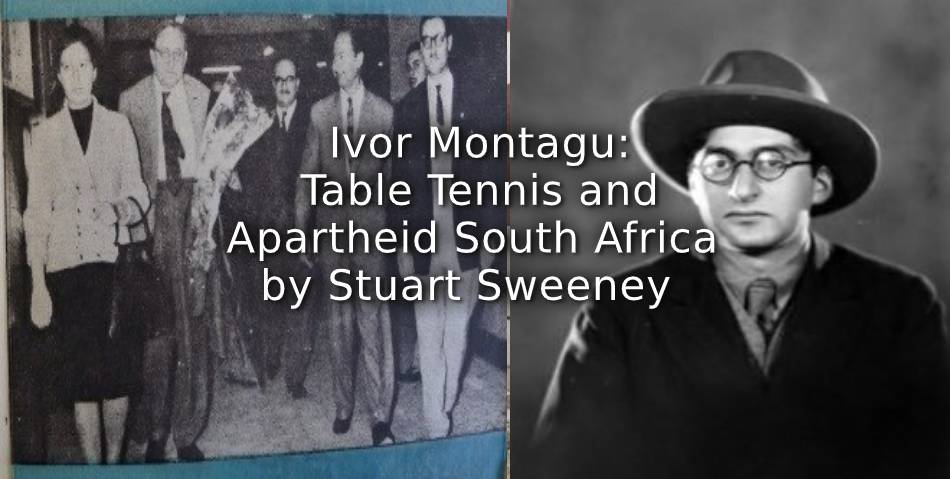

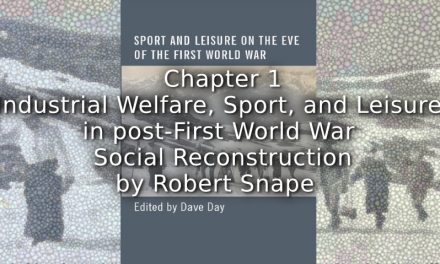
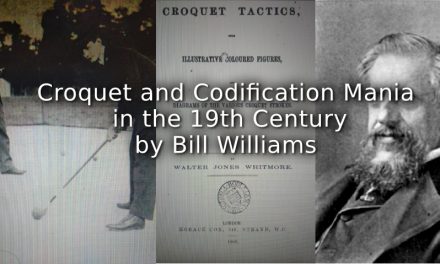
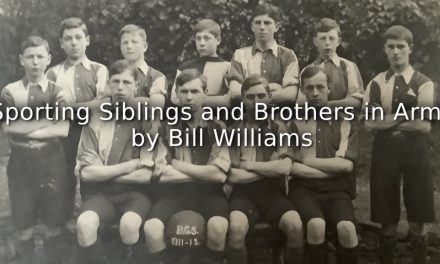
Fantastic article ! Montagu was a great figure. ITTF had six memberships for UK, so juridically Montagu could decide to accept or not one or two associations representing a state, but this not diminishes the courage. Before WWII, Nazi Germany hated him and the sport because dominated by Jewish athletes. ITTF kept Palestine’s membership also after 1938. In the tragic World championships of Cairo in March 1939, the two Palestine women athletes retired from the double disliking to match against German duo Bussmann and Pritzi, an Austrian who became German after Anschluss. As cover, they presented a medical certificate. The noteworthy Czechoslovakian team flying back to Prague they found their country occupied by Nazi troops. It was the last free Czechoslovakian participation to an international event before WWII. Thanks again for your insight !